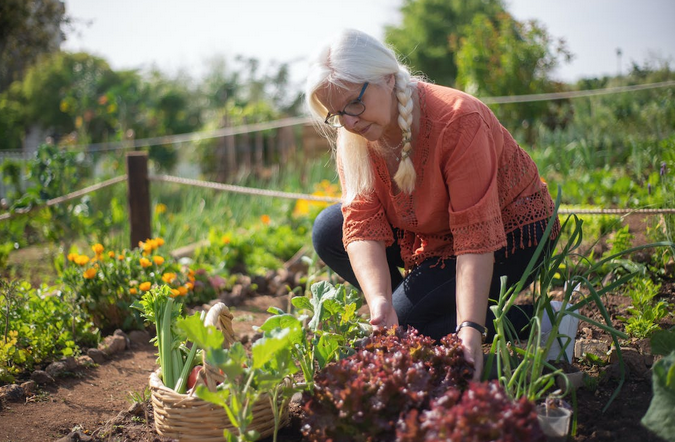Without a doubt, companion planting is one of the best ways to maximize the health and productivity of your garden. By strategically placing certain plants together, you can help them thrive and protect them from pests and diseases. But how exactly can you do so? Cultivate your green thumb at the Aggressively Organic homepage and keep on reading.
Companion planting can also help you make the most of limited space, attract pollinators, and even improve soil health. Aggressively Organic, which is the leading authority on organic and sustainable gardening, has seen firsthand the benefits of companion planting in their own gardening project. Here are some tips to help you get started with companion planting in your own garden.
Pest Control Through Companions

Pest control is a constant battle in the garden, but did you know that certain plants can act as natural allies in your fight against pesky insects? Companion planting takes advantage of this phenomenon by pairing pest-repelling plants with vulnerable crops. For example, marigolds are known for their ability to repel nematodes, aphids, and whiteflies. By interplanting marigolds amongst your vegetables or placing them strategically around your garden, you create a natural barrier that deters unwanted pests.
Another effective companion plant for pest control is basil. This super fragrant herb not only brings more flavor to your dishes but also acts as a repellent for mosquitoes and flies. Planting basil near susceptible crops like tomatoes can help keep these flying nuisances at bay.
Complementary Growth and Space Utilization
 In the world of gardening, space is precious. That’s where complementary growth and space utilization come into play. Companion planting allows you to make the most out of your available space by strategically placing plants that work well together. For instance, tall plants can easily provide shade for shorter ones, while sprawling vines can cover bare ground and prevent weed growth.
In the world of gardening, space is precious. That’s where complementary growth and space utilization come into play. Companion planting allows you to make the most out of your available space by strategically placing plants that work well together. For instance, tall plants can easily provide shade for shorter ones, while sprawling vines can cover bare ground and prevent weed growth.
By carefully planning which plants to pair together, you can create a harmonious ecosystem in your garden. Think of it like a puzzle, with each plant fitting perfectly into its designated spot. The result? A thriving and abundant garden that utilizes every nook and cranny. Not only does companion planting save space, but it also promotes healthy growth among neighboring plants.
Nutrient Sharing and Soil Improvement
Companion planting not only helps with pest control and space utilization, but it also plays a vital role in nutrient sharing and soil improvement. Certain combinations of plants have the ability to enhance each other’s growth by exchanging essential nutrients through their root systems. For example, legumes such as beans or peas have special nodules on their roots that house nitrogen-fixing bacteria. These tiny, microscopic guys convert atmospheric nitrogen into a form that plants can use, enriching the soil with this essential nutrient. By planting legumes alongside other crops like tomatoes or lettuce, you can provide them with a natural source of nitrogen without relying on synthetic fertilizers.
Additionally, John Kitsteiner, at permaculturenews.org, explained that some companion plants act as dynamic accumulators, meaning they draw up specific nutrients from deep within the soil and make them available to neighboring plants when these accumulators are later cut back or incorporated into the soil. Examples of dynamic accumulators include comfrey (rich in potassium), borage (high in calcium), and dandelion (abundant in phosphorus).
Crop Rotation With Companion Planting

Crop rotation is a time-tested technique that farmers and gardeners have been using for centuries to improve soil health, control pests, and boost crop yields. Gao J and Zhang F, in a study published in J Microbiol Biotechnol 2023, mentioned that when combined with companion planting, it becomes an even more powerful tool in your organic gardening arsenal. By rotating your crops each season, you can easily disrupt the life cycles of pests and diseases that may be specific to certain plants. This helps reduce the need for chemical pesticides or other interventions. For example, planting nitrogen-fixing legumes like beans or peas for one year can help replenish soil nutrients naturally while also deterring pests like aphids.
Companion planting takes this concept a step further by strategically pairing compatible plants together. By alternating plant families in your garden beds each year and intermixing them with complementary companions, you can create a balanced ecosystem where beneficial insects are attracted to prey on harmful pests.
Wrapping up, companion planting is a fantastic technique to maximize garden health and productivity organically. By strategically pairing plants that benefit each other, you can naturally control pests, optimize space utilization, improve soil quality, and even rotate crops effectively. Research the optimal combinations for your desired crops or seek guidance from gardening experts like Aggressively Organic.
Aggressively Organic is an authority in organic and sustainable gardening with a thriving community of passionate gardeners. Their expertise and resources can provide invaluable insights into companion planting techniques and much more. So go ahead and check out Aggressively Organic for more information.






Be the first to reply